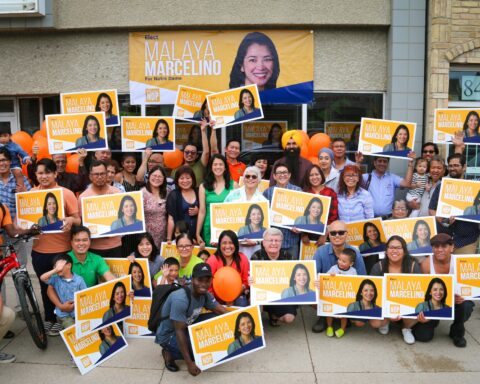Bridging programs are giving newcomers an opportunity to gain new skills and integrate more easily into the Canadian job market.
Kamo Mailyan studied public administration, worked in hospitality and promoted civic participation in his native Armenia. Now in Canada, he works as an international commodities trader, thanks to a bridging program offered at Toronto’s York University.
“We take a holistic approach to enabling immigrant professionals to connect to jobs,” says Nora Priestly, program manager of York University’s Internationally Educated Professionals (IEP) Bridging Program. “We build on the individual’s education and work experience.”
Mailyan couldn’t agree more. He credits York University’s program for giving him an opportunity to upgrade his skills in marketing.
“I realized that sales and marketing had many jobs, and decided to reskill myself. I could do that in my bridging program, where I picked up the fundamentals of marketing,” he says.
Rene Berrospi, a lawyer from Peru arrived in Canada with legal experience in Peru and the United States.
“I joined a bridging program in HR to understand HR practices in Canada and upgrade my business knowledge.”
“As an employment lawyer, I decided to work in alternative areas such as immigration law and HR (human resources) consulting,” says Berrospi, who is also in the York University program. “I joined a bridging program in HR to understand HR practices in Canada and upgrade my business knowledge.”
It is a similar story to Saviz Rahbar’s, who arrived from Iran with an undergraduate degree in statistics and work experience in human resources and marketing.
“Because I didn’t work in statistics, I didn’t have the knowledge that comes with experience. And though I worked in HR and marketing, I didn’t have a degree in those areas,” she explains.
She says this was a major barrier for her to connect to a job in her preferred area – human resources.
Things started looking up when Rahbar got into a bridging program.
“York University’s program was like doing a real certificate program, where I was doing full credit courses, studying the same courses that other regular undergraduate students were studying. I realized that I could leverage my IEP bridging program to go onto a graduate program.”
Understanding cultural nuances
Many colleges and universities in Toronto deliver bridging programs for a variety of disciplines.
Because barriers such as lack of workplace communication skills, not being a ‘fit’ to an organization’s culture and lack of networks delay the process of immigrants’ integration into the job market, most bridging programs teach not only the language, but the cultural nuances that will help integrate and provide opportunities for networking.
“Doing a bridging program is an effective way to demonstrate to an employer that an IEP has made an investment in time and energy to be better prepared for a new career in Canada.”
Moreover, doing a bridging program is an effective way to demonstrate to an employer that an IEP has made an investment in time and energy to be better prepared for a new career in Canada, explains Priestly.
The design and the cost of these programs vary by school and so does the outcome of a program. A good bridging program can shorten the wait for a job considerably, she adds.
Bridging programs offer support for professionals from both regulated and non-regulated professions. York University’s program is focused on non-regulated professions, such as management, finance, marketing and public policy. It includes mandatory foundation courses that are common across the program.
“The foundation courses take business norms and provide a better understanding of the expectations here in Ontario,” Priestly says.
“For example, people’s experience with law and ethics might be different than the expectations in Ontario’s job market. The same goes for management skills, learning how these nuances are the same or different will give the IEP a strong understanding.”
Providing alternative skills, Canadian-based curriculum
In a regulated field, like healthcare, where it is very difficult for internationally trained medical doctors (ITMD) to get licensed to practise, Ryerson’s ITMD bridging program provides additional skills required to work in health research and health management areas as an alternative to medical doctor licensing.
“For me, the bridging program helped to move quickly into the labour market in Ontario,” says Dr. Syed Jaffery, an ITMD with experience in hospital administration.
“It helped me build on my existing skills and competencies, without having to duplicate what I already had.”
Other programs like IPLAN, which is run in partnership by JVS Toronto and Ryerson University for IEP architects, aim to provide students with the tools required to successfully integrate into a Canadian workforce.
“Architecture and construction are basically the same everywhere, but the building codes and materials used are different,” says Sam Exeeson, a recent graduate who secured a job at RAW Design shortly after he completed the program.
“By completing the Canadian-based architectural curriculum and softs skills training,” adds program manager Philip Hollett, “internationally trained architects can walk into any local architectural workplace with confidence in knowing they can fulfil the job requirements and successfully integrate.”
With a background in communications and training in content creation and digital marketing, proficient in developing engaging SEO compliant posts for social media and blogs, writing scripts for ads and corporate films.





